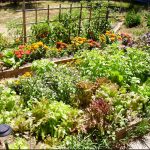Rules Of Pressure Canning
Table of Contents
Always make sure you clear the harvest safely and easily by applying these pressure-canning procedures.
Using the boiling water-bath canning protocol, the rules are straightforward and tools easy to use. The food preserver collects together vegetables containing high pH-high acidity level, such as berries, peaches or tomatoes. It prepares the food to its liking—may be with some added acidity, fills the jars and within a little time of processing, changes the jars to cool.
But for those canning freaks who want to showcase their creative skills and store up variety of foods in their storage room, strawberry and salsa jam lose their tastes after some rounds. At some point, the serious food preservers identify the usefulness of a pressure Can—the only kitchen ware that permits cooks to preserve foods with lower acidity level at home.
Pressure Can allows entry to new canning formulas which enable cooks to preserve homegrown veggies or foods with an acidity level of less than or equal to 4.6 like beets, carrots, beets, green beans and peppers without passing through the process of pickling to achieve the correct pH balance. You can also preserve foods containing protein, such as meat, soups, stocks and wet beans using pressure-canning procedures.
Before you get too anxious about breaking the chains of your water-bath canner, it’s necessary you take note of those little risks and dangers that are attached to pressure canning. It’s also needful to really know how pressure canners work before engaging in your first preservation project.
Below are a few tips to make pressure canning process less stressful for you.
1. Understand How Your Pressure Canner Works
When you preserve food with a pressure Canner, you have successfully put an end to the risk of getting deadly food poisoning all because the process is done under a pressurized condition. When properly done, pressure canning gives protection from the growth of spores causing botulism (a deadly toxic substance caused by bacteria in foods). Spores causing botulism cannot withstand heat of 240 degrees F or higher, so pressure canning helps to remove the threat by reaching a high internal temperature level which may not be unattainable when using the conventional open boiling water method.
Before you start using your pressure-canning equipment, review the instructional manual that comes with your model. Ensure all pieces of equipment, especially the canning jars and lids, are well cleaned and free of nicks or cracks. Prepare foods by following instructions given by the recipe. Use the recommended methods available in the recipe of your choice. Place the rack correctly in the Canner and fill the Canner with water of at least 2 to 3 inches or the quantity of hot water specified in your recipe. Heat the water up to 180 degrees F prior to pressurizing if you are using a hot pack method but if you will use the raw pack method, heat the water to 140 degrees F.
Place your readied jars into the Can one after another whenever you use a safe lifter. Also make sure there is no spillage. Your Can should be large enough to contain four quart jars. Fasten the lid very tight and securely, then adjust up the heat to the highest setting, bearing in mind not to overheat the Can. Relief the vent pipe or open the petcock of the weight, let the steam to flow for at least 10 minutes—time to carefully vent the Can and make sure there is no air left inside, which could spoil the process. After venting, close the petcock or put the gauge on the vent pipe. From this point, it will take 3 to 10 minutes before pressurization occurs.
2. Stick Around to keep a watch
During pressurization, you should try to stay close by to watch out for success or failure signs. You need to control the heat by adjusting slightly, and when necessary, to maintain a constant gauge pressure, which should be stated in your recipe.
While one of the gauges shakes for a certain number of times during this process,the other rocks steadily. These are both good signs if you are using a newer model Can. Process for as long as instructed in the recipe and always keep a kitchen watch to track the time.
Whenever pressure falls below the recommended amount stated in your geographic altitude (this is usually between 10 and 11 pounds or depending on the type of Can), reject and restart the process. Variations in pressure will result into siphoning or loss of liquid which eventually leads to under-processing. If you notice any compromised pressure within the Can, put off the heat and move the Can from the burner, lift upwards and allow it to cool by itself.
3. Allowing The Can To Cool
Once you are able to meet up with the right amount of constant pressure and time frame for your recipe, it’s now time to allow the Can to depressurize bit by bit. Put off the heat using caution and if you must lift, don’t slide the Can.
You can leave the Can in place with the heat turned off, it’s acceptable that way. Even after the pressure gauge dials back to zero and the gauge is cool to touch but just leave the Can alone. Do not allow steam to escape when you lift the gauge. Vent locks will open when depressurization occurs in newer Can model. It’s advisable to leave the Can alone overnight before releasing.
4. Purchase A Newer Model Canner
According to the National Center for Home Food Preservation, you should only purchase pressure canners manufactured after the 1970s. Older models are clunky and the vents were operated manually, but modern pressure canners include removable racks, automatic vents and cover locks, as well as a safety fuse. Modern canners will also come with a weighted gauge to regulate the pressure inside the canner. The gauge should jiggle or shake during pressurization, which is a mechanism for maintaining the right level of pressure. Older models do not include many of the new safety features, which include an automatic unlock function the moment of depressurization.
5. Seek Out Recipes—Or Someone With Experience
The validity and reliability of a tried-and-true canning recipe is the preserver’s greatest asset regardless of the method in practice. Seek out recipes from credible sources, not just Internet sources or your grandmother’s cookbook. In the past 50 years, canning technology has changed, and so have standards and guidelines for preserving food. Start with the Ball Complete Book of Home Preserving or visit the National Center for Home Food Processing for recipe ideas.
Even with a clear-cut recipe and a new pressure canner, you still might have apprehensions about using a pressure canner. To further ease your fears, consider partnering with a friend with experience using the equipment for an afternoon of canning from your garden. Or contact your local agriculture extension office, which often offer classes on canning methods.
Soutce: UrbanFarmOnline.com
Featured Image: credit to Flickr/Bug G. Membracid


















